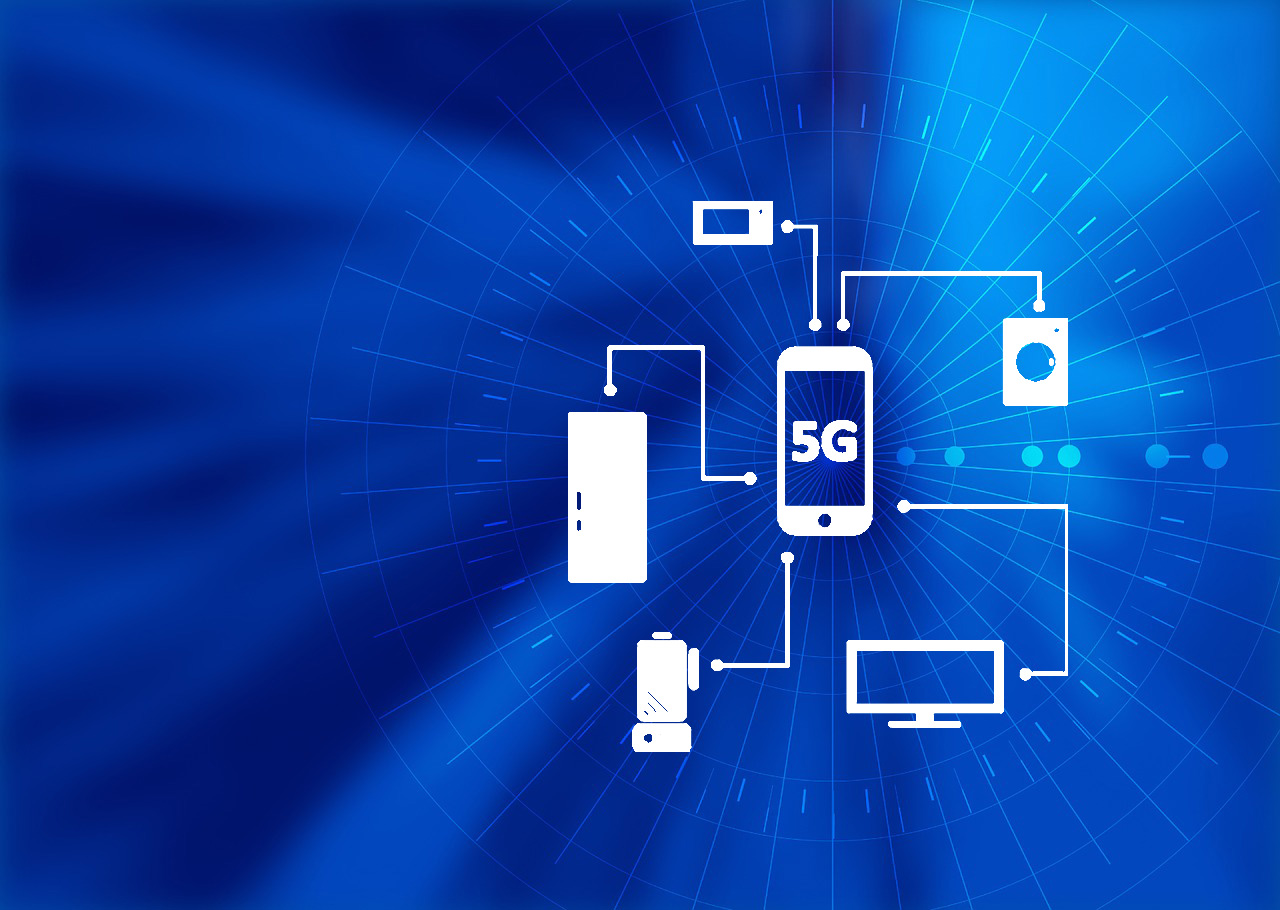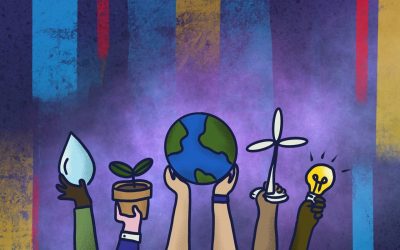THE FOURTH INDUSTRIAL REVOLUTION IS NOT JUST ABOUT TECHNOLOGIES OR BUSINESS. IT’S ABOUT SOCIETY.
The Gigabit Society
Have you ever heard of “Gigabit Society”? Well, fasten your seatbelts and be ready as you will be starting to experience it pretty soon.
Sci-fi had already kind of imagined it (it was back in 1982 with Blade Runner in cinemas – although already in the ‘50s you could read books and watch movies set in a sci-fi environment) but today it looks as if we are almost there: self-driving and driverless cars – almost ready to be released on markets – drones delivering our parcels, AI assistants, real time info sharing and VR surgery – just to mention a couple of examples.
Virtual Reality, for example, has already started to change our lives, completely. The domains in which it will be applied are going to be many and not just gaming. Think about automotive, manufacturing, education, communication and entertainment, design and tourism, sport, commerce and medicine, and many many more.
The experience sits right in the middle of the process, it’s completely immersive and it’s set in an entirely digital environment – created as if it was a real place on earth.
Nowadays, every single industry is involved (at least a tiny bit) with what is known as Digital Transformation: no-one can exist or not consider implementing a fast tracked digitalization process. It is traveling at light speed but it will only be successful if all countries can cope with how fast technologies are changing.
5G, the starts of the real digital revolution
Why am I saying 2022?
Well, in just three years, 5G, the new mobile standard, will be available. Experiments have already started on a global scale and all the biggest telco players are involved.
A lot of excitement about 5G is its ability in allowing new technological scenarios to become true – this is allowed by its fastness and the density of the new service.
Device for mixed and augmented reality, used in different sectors, need a massive bandwidth to be able to transfer all the data that the technology itself requires. This is something quite difficult to be achieved before but, with 5G networks, this will all happen in a more fluid way. Tourism will get a big boost by implementing Augmented Reality (AR) experiences at historical and archeological sites.
Of course, 5G cannot exist on its own: it is fundamental to have a good synergy amongst all the technologies. This will work towards the creation of a “Gigabit Society”: we will move towards Industry 4.0, Smart City, Smart Home and much more.
The path to the Fifth Generation
So, what is actually 5g?
The acronym 5G stands for “Fifth Generation” and, as the term indicates, is the fifth generation of technologies and standards for mobile device connectivity.
The new connection standard is the heir of the current 4G which had already brought a massive improvement for large bandwidth for mobile internet.
Everything started with the network for TACS telephones, also known as 1G. Back in 1991 2G or GMS was implemented. This system was mainly about voice services. Then experiments on mobile connectivity at high speed started, and that is how we got to 3G, which was able to put together voice services and mobile internet. Then we got to the implementation of LTE (Long Term Evolution), the successor of the above mentioned 4G, designed for being faster and more efficient whilst transmitting data.
Despite the performing abilities of the current mobile network, 4G will never be able to cope with the technological evolution already taking place and which will see billions of mobile devices and other tools connected at the same time to the network. 5G is therefore designed to cope with the changes, guaranteeing surprising fastness and very brief response times.
The new standard should use parts of spectral millimetric waves between 6 and 100 GHz exploiting multiple antennas placed very close to each other. This is what is known as ‘Small Cell” (low frequency short-ranged wireless transmission networks), a widespread network which will guarantee better coverage everywhere.
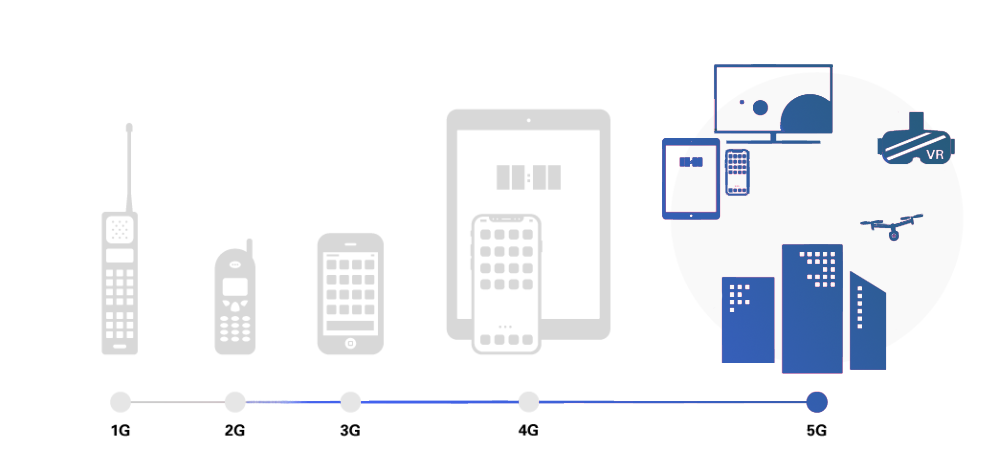
5G and IOT for Smart devices
But which one will be the real revolutionary push? Both 5G and Internet of Things are two disruptive forces but, once they have been united and put in synergy, they will be the key for heavy spread of Smart Devices. They will also be, as already mentioned before, the spring to move towards Smart Homes, Smart Grids and Smart Cities.
Internet of Things represents a very promising and flexible world in the high-tech domain, constantly updating and adding new features.
Iot will have an impressive number of devices connected, almost 76 billions by 2025. This translates into the creation of a very rewarding market in terms of profits and business opportunities.
Such technology encompasses all devices and intelligence environment applications for Smart Homes and Smart Cities. Today, most of them are still not widely used for issues related to connectivity.
And this is where 5G becomes relevant, optimizing the technology and giving it the push it needs. These are some of its strengths: It can increase massively the density of devices connected to the network and it can define new ways of interaction between people and the environment.
The connection to a mobile network allows to track and identify every single connected device, managing all services and devices. Traffic management, citizen services, security sensors, video surveillance are just a tiny part of different types of things which can be remotely controlled through this mobile connection standard.
In Smart Cities, for example, such use of digital technologies will be easily translated into an improvement of public services for the inhabitants – it is a more efficient use of resources with a smaller impact on the environment.
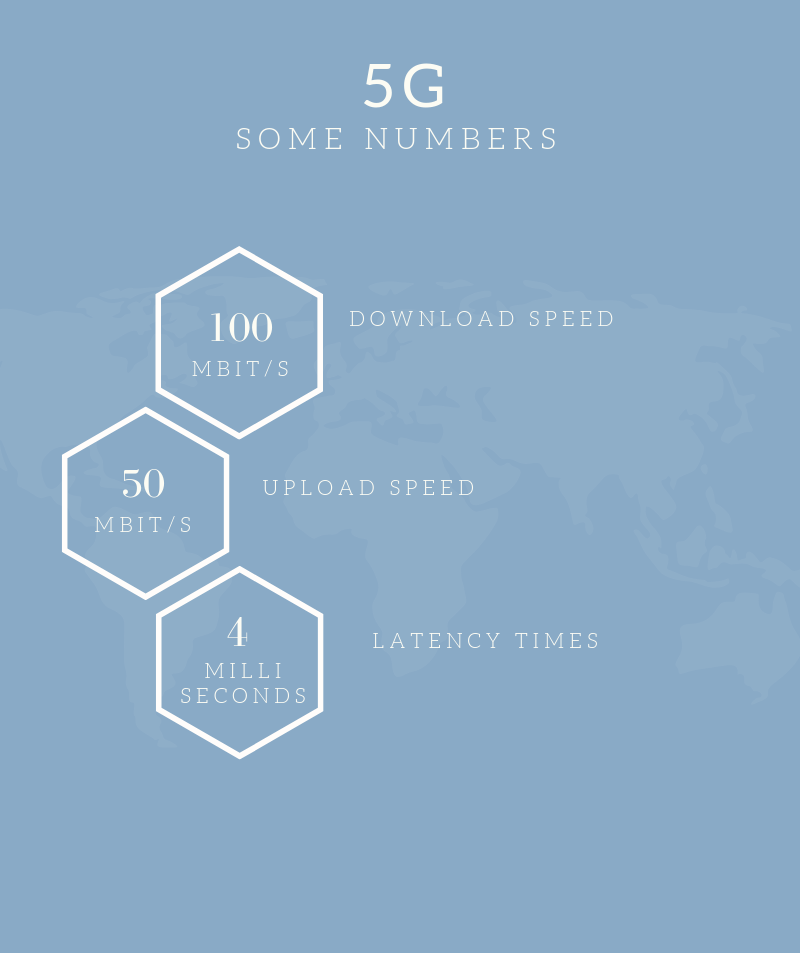
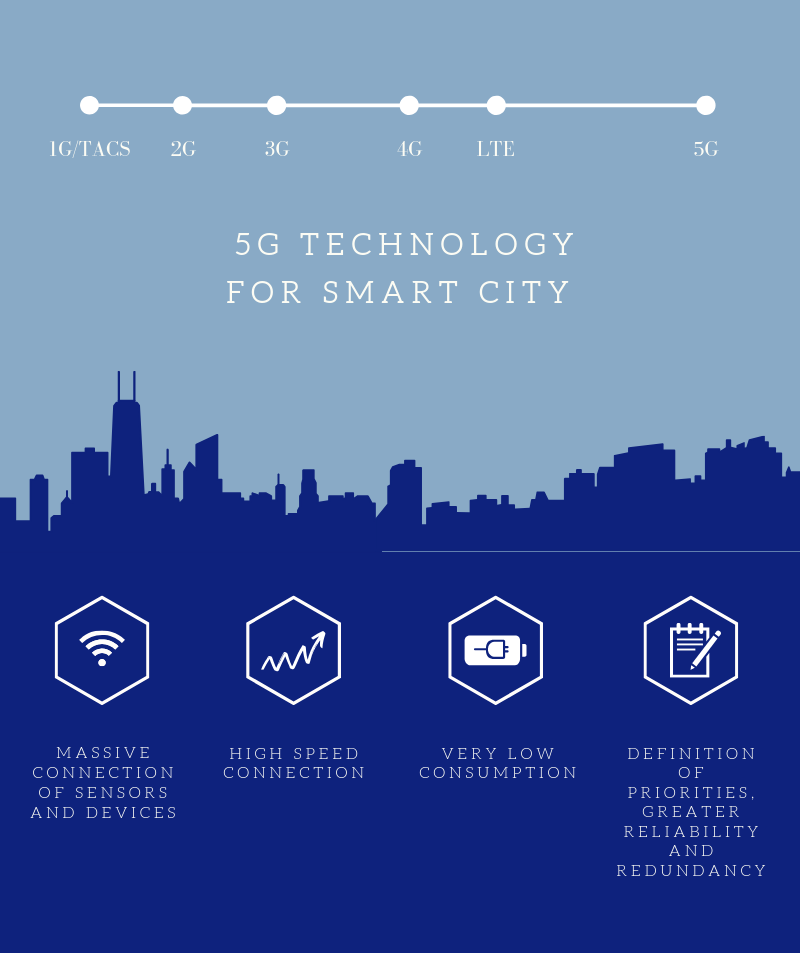
Some other sectors that will be involved in 5G revolution
Despite the general interest is focusing mainly on the effects that the synergy between IoT and 5G will have on society, the arrival of 5G network will bring massive development and transformation opportunities in many different sectors.
Let’s have a look at which ones:
- HEALTHCARE
eHealth is one of those domains where there is an urgent necessity to move towards more advanced diagnostic and therapy techniques. In such a scenery, hospitals, doctors and other healthcare professionals are pushing towards adopting newer and more sophisticated machines to interact with the patients.
It is becoming essential to use technologies which can reach patients wherever they might be and in real time. With 5G doctors and patients will easily connect with each others but, also will hospitals, doctors and healthcare professionals. Efficiency levels of the healthcare system and the quality of the services provided will subsequently improve.
The objective is reached through the implementation of robotics innovations for surgical operations or by monitoring vital signs through sensors. All this will be done in real time and amongst different hospitals. Documents or info with important size will be shared and new systems with VR or AR for diagnostics will be introduced. - AGRICOLTUREAgriculture will receive a radical push through the new transmission standard, with the consequent development and implementation of IoT. Together with Massive IoT strategies (which include a huge number of IoT sensors), a new system of Smart AgriFood will be born. Such term identifies a vision for the future of the agriculture and agroindustrial production where, with the use of digital technologies, the whole sector will improve its competitiveness.
Plantations will be constantly monitored: there will be remotely controlled drones keeping an eye on different sections of the crops, antiparasitics will be given only where necessary and new areas for cultivation will be easily identified.
These are all essential tools to reduce costs to a minimum, impact the environment less and improve food security. - MANUFACTURING AND LOGISTICS
Manufacturing 4.0 is one of the buzzwords linked to 5G and it indicates a tendency towards manufacturing automation. It integrates some new productive technologies to improve work conditions, creating new business models and intensifying the productive quality in plants.
The new connection standard, IoT and the fourth industrial revolution will go hand in hand. The key words will be: efficiency, automation and optimization of volumes and production quality (also robots and artificial intelligence will play a role in this).
Benefits will not just be about production – they will also extend to logistics and movement of goods. It will be possible to program and automatize tools which will deliver the goods directly to the final customer. - AUTOMOTIVE
This sector is definitely one of the biggest players in the 5G revolution. On 4th July the European Commission rejected the proposal of adopting wifi technology for vehicles. Fifth Generation was the preferred communication standard instead – it allows communication amongst Connected Cars. It is also known as C-V2X. The translation of this acronym is connectivity “Car-Vehicle to everything”.
The connection to a fast network such the one that will be here soon will make cars a fundamental part of Smart Cities.
Despite media and companies are focusing their attention on the technical development and the implementation of self driving cars, the most important objectives will be the increased security in vehicles, reducing pollution and handling traffic in a better way – this means less risks for everyone.
The challenges of 5G
All that glitters is not gold. Let’s try to put to one side all our enthusiasm for 5G: there are some doubts and worries which have already been raised and there are still many changes yet to be faced.
COSTS
Something that really worries people is its implementation cost.
Companies and governments are investing big sums of money for the creation of new devices, for new antennas, to manage cloud, for new systems and hardware but also for the retrofitting of the pre-existent infrastructure – which basically means adapting all that is already in place so it can support the new systems.
5G needs new technologies, such as Massive MIMO (Multiple-Input Multiple-Output) – a wireless network that allows the transmission and the reception of one or more data signal at the same time on the same radio channel. Such technologies are needed for new wave frequencies (for the millimetric ones) since 4G uses different ones.
SECURITY
Let’s analyse another weak point. As every single new generation mobile technology, 5G is creating a lot of problems around cyber security and, according to some, such technology represents one of the biggest challenges ever faced for security.
The exponential amount of connected devices will increase the number and the intensity of cyber attacks due to the ever more critical nature of the managed apps.
Many things will change hence why thinking about IT security from a different perspective will be necessary. It will need to be developed and designed together with networks and not at separate stages.
HEALTH
Like every other innovation, the new standard has a lot of enthusiasm for the technology evolution and for the every-day life benefits. These positive thoughts are often mixed with fear of possible risks for our health.
The new wave frequencies, the millimetric waves we have already mentioned, can be easily absorbed by walls, rain and even leaves. For this specific reason, an infrastructure is based on Small Cells – nodes of cellular radio access with a low power. They also operate within a spectrum, either with or without licence, in a distance that goes from 10 meters to a few kilometers. Small Cells involve an obvious proliferation of antennas and wave repeaters.
For such reason, many people and associations have raised their concerns regarding future exposure to radio frequencies and electromagnetic fields, which might be linked to the raise of tumors.
The Italian National Institute of Health has recently told the Parliament that “with antennas for 5G, the potential risks are more remote than the ones related to using mobile phones”. Despite such message, carrier networks still do find many obstacles that set stricter limits on electromagnetic emissions than other countries. Such issues could translate into a later installation of new antennas and that would postpone the implementation. Such scenery would cost Italian consumers a delay in the use, a smaller diffusion and an increased price compared to other countries.
The revolution has already started and the connectivity will not be limited to the network capacity but it will be con controlled and defined by a specific requirement: every house, company, vehicle and mobile device will be able to work with high transmission speed and with super low latency.
A process that will revolutionise businesses forever and will change our lives and the way we live globally, for the best.
You might also like:
IoT from A to Z in 4 steps – I part
IIoT from A to Z in 4 steps – II part
Smart grids: the future of the utility market
